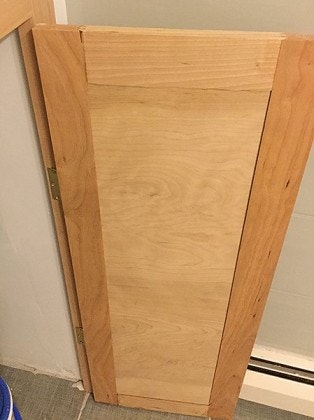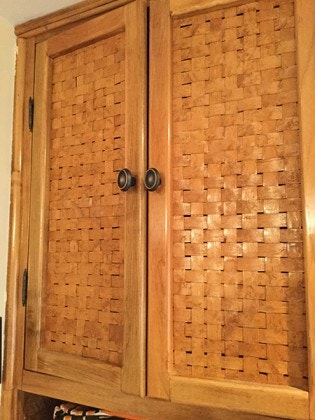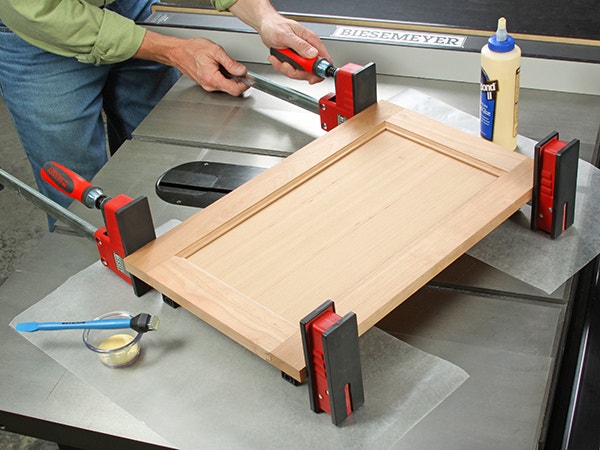Fixing Non-closing Cabinet Doors?
I have an embarrassing question about inset doors. I've made several for bathroom cabinets, but they won't close properly. I can accidentally get one door to close perfectly, but the others refuse. I have a magnetic catch on the doors, but that doesn't help. Are the doors warped? Probably. But there must be a way to overcome that. Attached are pictures from an old project and my latest. Please help! - Barney Heller
Tim Inman: I think you have set the hinges too deeply. This is a pretty common error to see. When the hinges are set too deep, the edge of the wood hits before the door is closed. Result? A door that is perpetually slightly opened. You can usually fix this quite easily by laying a small piece of veneer or even cardboard under the edge of the hinge that is too far down in the mortise.

Chris Marshall: Barney, we all have our embarrassing woodworking foibles, but more power to you for being willing to ask for advice — especially in a public forum like this. Tim is probably right on the mark here with his suggestion that your hinges are set too deeply. But, for the sake of other possibilities, let's say the hinges are mortised perfectly. I would remove those troublesome doors and lay them on a dead-flat shop surface, like your table saw. If they won't lie flat, you'll have your answer about warp or no warp. I see from your photos that sometimes you use cope-and-stick bits to join stiles and rails, while other times, maybe dowels or some other option. My advice: be careful how much brute force you apply to the clamps when gluing up these frames. You can sometimes distort door frames out of flat or square by simply unknowingly over-tightening the clamps, particularly with joinery that lacks long protrusions, like tenons. Once a door frame is distorted at the corners and the glue dries, it's a much tougher prospect to flatten it again.

Also, I try to give my door stock time to acclimate and "misbehave" during the initial surfacing process. I’ll reduce my stock to about 1/4-in. overly thick, and rip the rails and stiles about 1/4-in. overly wide. Then, I leave them to "rest" at least overnight or even a day or two. In that amount of time, the wood's natural tendencies to distort will come into effect, and it will bow, cup or twist. Oftentimes, you'll see or feel it happening almost immediately, but other times it takes longer. At least if you leave the material overly thick and wide, you have the recourse to then joint and plane it again to correct those defects. But, plane it all the way down to 3/4 in., then immediately rip it to final width, and you've got no margin left. Dead-flat is always the best place to start with door stock, then cut your joinery accurately and go easy on the clamps. I'll bet you'll see those persnickety door problems decrease.
Keep the inspiration coming!
Subscribe to our newsletter for more woodworking tips and tricks





